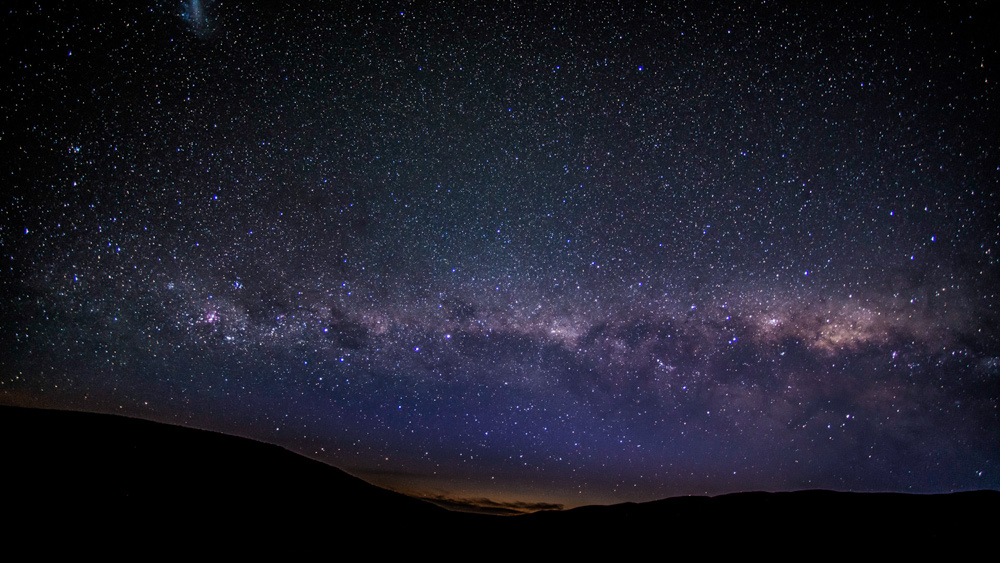
Tell me about the stars you see in this image.
They look like billions of little pinpricks of light, right? It’s hard to imagine that each one of these is probably the size of the sun…or much larger. And the sun, by the way, is about 109 times Earth’s diameter.
So if you thought those stars were small…not so.
It makes sense that they would be very large. Their light reaches us from many light years away, with the nearest star 4.3 light years away and the most distant one likely trillions.
In order to radiate that far out and stay bright enough to speckle the night, they would have to be very luminous, and that means having a large surface area, even if they’re not particularly hot.
So how do we know how big the stars are?
That’s all thanks to the handy-dandy H-R diagram, which I described in my last post.

Let’s take a look at the different types of stars represented here. We’ve got white dwarfs, main sequence stars, giants, and supergiants. You might recognize the term “red giant;” it just means a giant star that’s red.
The main sequence stars—the ones that follow that slanting line that runs through the middle of the graph from corner to corner—are the most common. About 90% of normal stars are main sequence, including the sun. We’ll talk more about that in future posts.
White dwarfs are the least luminous of all the stars. One example is Sirius B, companion star to the brightest star in the sky.
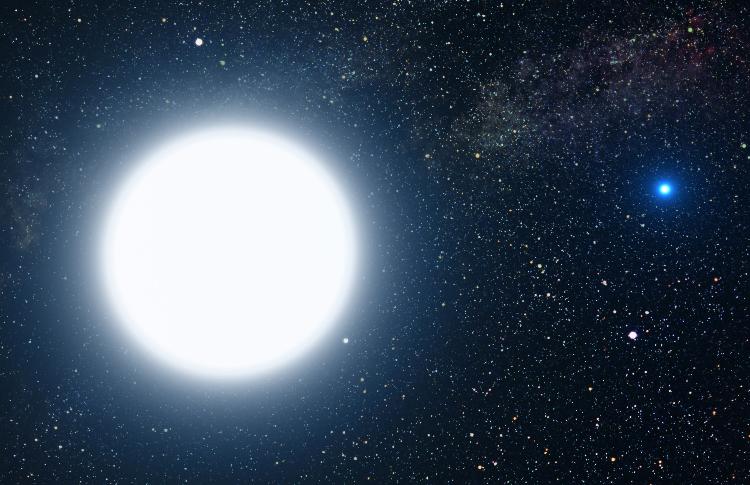
Some years ago, a few members of my astronomy club (the Temecula Valley Astronomers) challenged one another to try to photograph Sirius A and B…separately. It’s a lofty goal—Sirius A is so bright it has no trouble outshining a white dwarf like Sirius B.
But why is Sirius B so dim?
It’s certainly not because of distance—at 2.64 parsecs, the star system is actually one of the nearer stars to our solar system. And it’s not because of its temperature. White dwarfs usually have a spectral class of O, B, A, or F, meaning they’re very hot.
Not surprisingly, Sirius B is dim because of its size. It may be hot, but it’s also very small, another characteristic of white dwarfs. That means it doesn’t have much of a surface area to radiate its heat, and consequently, it has a low luminosity.
There’s another kind of dwarf star that’s found at the bottom end of the main sequence—the red dwarfs.
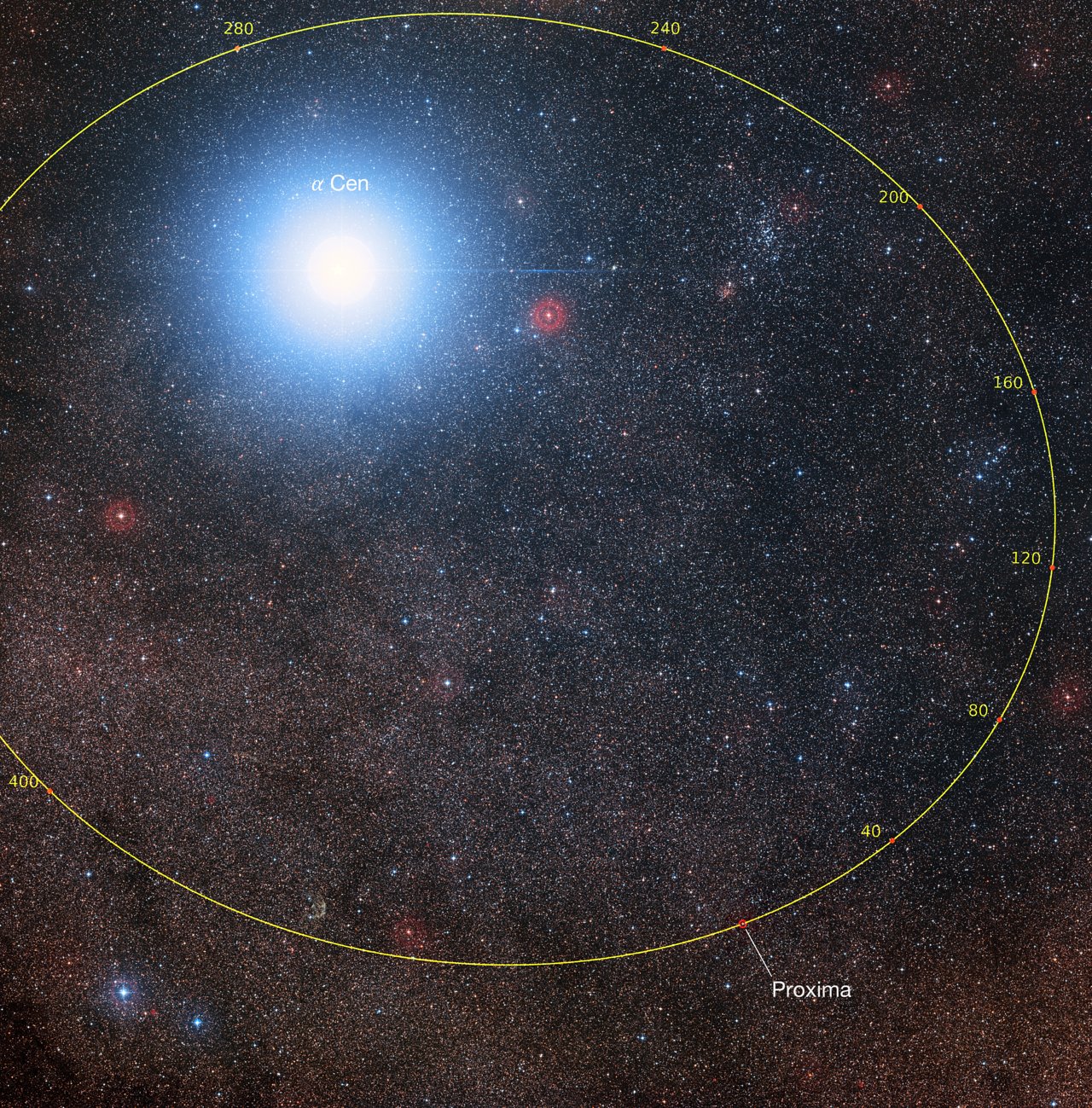
Meet Proxima Centauri, our nearest stellar neighbor, orbiting the larger and more luminous Alpha Centauri about 4.3 light years away from us.
Proxima Centauri is a red dwarf. As the name would suggest, it’s very small, though not quite as small as a white dwarf. Red dwarfs are found at the bottom end of the main sequence, on the far right of the H-R diagram.
These stars are M-class, meaning they are very cool, just about as cool as stars get. This means they don’t need to be as small as white dwarfs are to be faint—they simply radiate less energy.
Then, there are the giants—such as Arcturus, Aldebaran, and Pollux.

You can find Arcturus in this image. It’s the large, red star near the center of the image. It’s not actually that obviously red to the naked eye, but it’s there.
If you want a tip for finding it in the sky yourself, just find the oft-recognized shape of the Big Dipper in the constellation Ursa Major to the right—a line drawn from the bottom two stars of its cup will lead you roughly to Arcturus.
Arcturus is a roughly K-class star, meaning it’s just a bit hotter than the M-class red dwarfs. If it were main sequence, it would be no brighter than one of the fainter stars of the Little Dipper—you can find that constellation above Ursa Major in the image.
But Arcturus isn’t main sequence. It’s much larger, over ten times the size of the sun. That makes it a giant star, and because it’s so much larger, it has more surface area—and that makes it more luminous.
Last but not least, we have the supergiants—including, but not limited to, Rigel, Deneb, Betelgeuse, Antares, and even the North Star, Polaris.
I think I’ll give you two examples for this one, just because I can’t choose between Betelgeuse and Polaris.
You can find Polaris in the image above, but here’s a more obvious one:
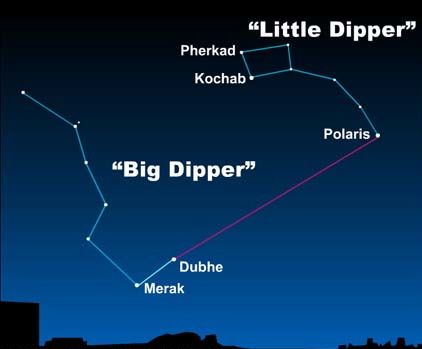
You might have been led to believe that the North Star is the brightest star. Like I said, that distinction belongs with Sirius (though technically, the sun is the brightest star in the sky).
Polaris is actually rather faint and not that easy to navigate by. It serves as our north star because our north pole happens to point toward it. When Earth rotates over the course of a day, it looks like the whole sky is rotating around Polaris.
But Polaris is special…because, believe it or not, it’s a supergiant star. It’s a thousand times brighter than the sun because it’s so large. It only appears faint to us because it’s also very distant—a good 133 parsecs away. That’s really far.
Betelgeuse is a more obvious supergiant.
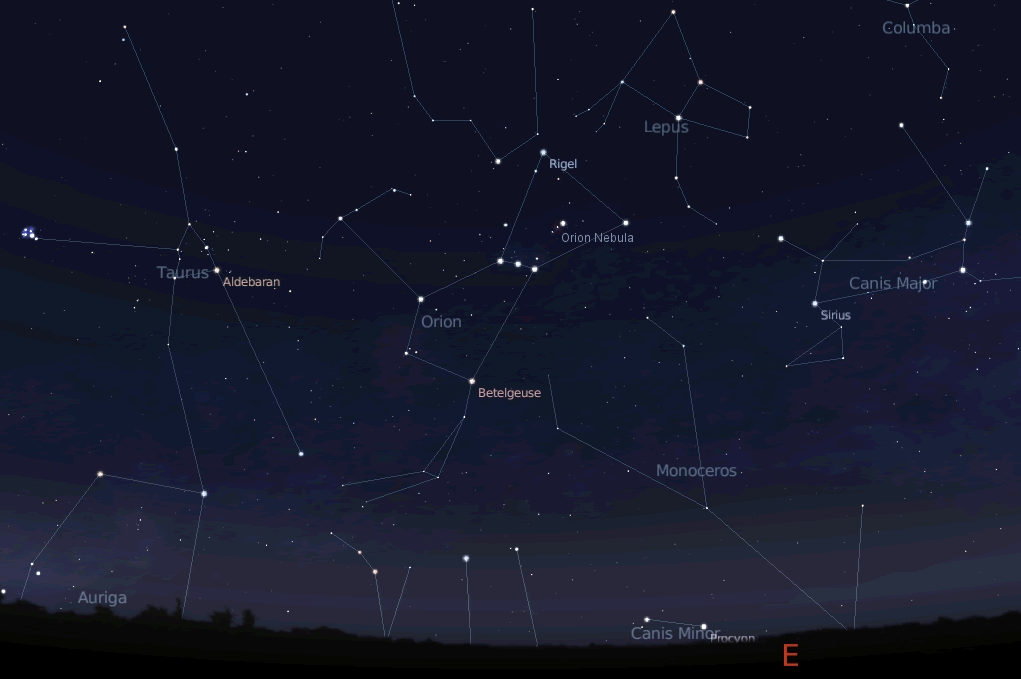
Betelgeuse is a very distinctive star within the constellation Orion because of its red color. Serving with the bright blue star Rigel on opposite corners of Orion, it makes a striking contrast.
(Rigel, by the way, is another supergiant, and you can see it as the uppermost star of Orion in this image.)
Supergiants are between a thousand and a million times more luminous than the sun, but only because they’re so large. They range from relatively cool M-class red stars, like Betelgeuse and Antares, to hotter A-class blue stars, like Rigel and Deneb.
So how massive are the stars, exactly? And how much do they vary?
Lucky for us, we can easily calculate the size of most stars.
All stars are ranked according to their absolute visual magnitude, which is how bright they would look from 10 parsecs away. Most stars are also easily identified by their spectrum, which tells us not only their composition, but their color and temperature.
Once we have a star’s temperature, we can convert absolute visual magnitude to absolute bolometric magnitude, which is how bright a star would look from 10 parsecs away if the human eye could see all of the radiation the star emits.
And from there, it’s easy to calculate the star’s luminosity—which is directly related to surface area.

Because we’re talking a lot more than miles and a lot less than astronomical units, the distance between the Earth and the sun, we use solar radii (plural for radius) to describe star size. One solar radius (1 R⊙) is exactly the size of the sun.
As you might expect, the tiny white dwarfs are only about 0.01 R⊙. That’s one hundredth the size of the sun. But you might be surprised to realize what that means—they’re around the same size as the Earth, and yet they’re much hotter than the sun.
Main sequence stars, not surprisingly, range from about 0.1 R⊙ to over 10 R⊙. Giants are between ten and one hundred solar radii, and supergiants range from less than one hundred to over a thousand solar radii.
Anyway, I think that’s enough on star size for now—next up, I’ll talk about a way to classify stars according to their luminosities.
Nice post. I’m curious about the North Star/Star of Bethelehem connection. I hadn’t heard that before.
LikeLiked by 1 person
My mistake. That must have been a personal association of mine; I’ve changed it in the post.
LikeLike